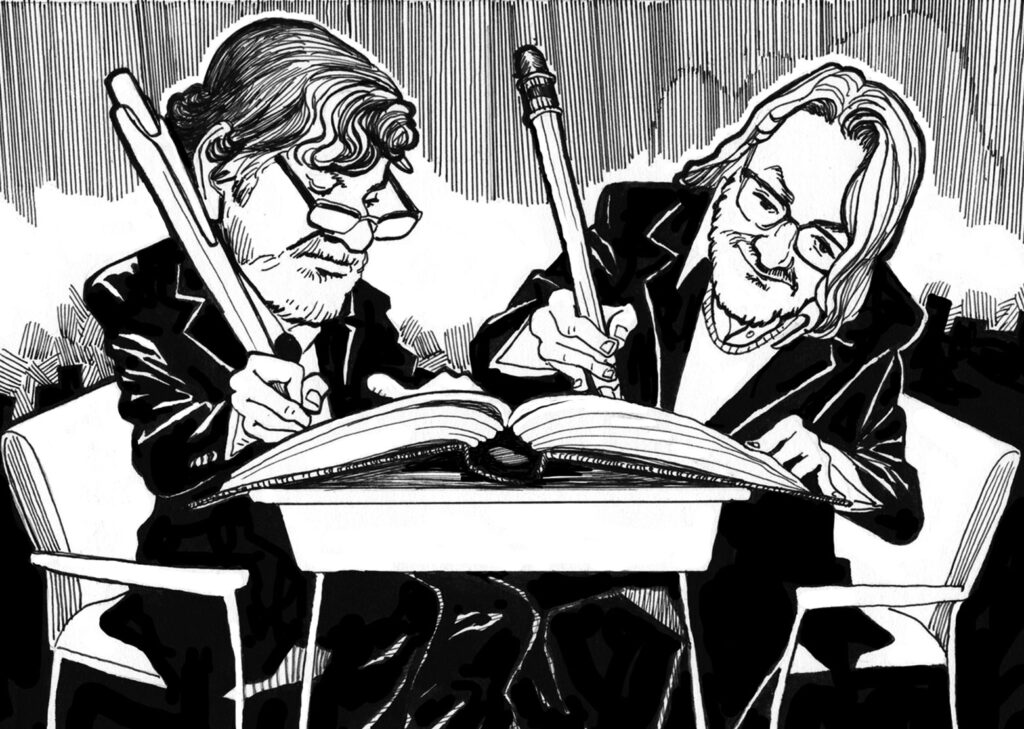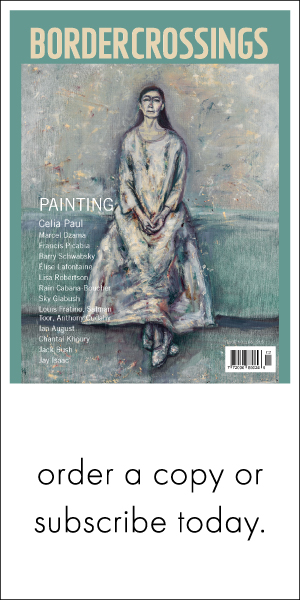The prizewinning author M. G. Vassanji has written a lively, perceptive, and angry book that in many ways is a throwback to the screeds of yesteryear. His target: the stuffy attitudes that deny new Canadians a place in Canadian culture. Given the tribalism so prevalent today, one can only welcome his cogent argument for a common citizenship that encompasses all our separate identities: a “more sophisticated essence of Canada,” he calls it, where we can accept that “your history is mine, your stories mine, your imagination mine.”
Nowhere, Exactly begins by acknowledging the country’s transformation from a racially restricted society to a much more diverse population with liberal attitudes. Vassanji concedes that Black and Indigenous authors have elbowed their way into the mainstream recently. Then he opens fire, arguing that the narrow-mindedness he encountered when he arrived here forty-five years ago still rules Canadian culture. In Vassanji’s disgruntled view, writers and artists must accommodate themselves to the notion that our culture is or should be rooted in the country’s founding nations.
The tone of the book is serious and formal, so much so that it’s probably not fair to call it a rant, even though it features the hectoring, the pique, the daring, and the drive toward a foregone conclusion. In fact, half of the essays are thoughtful reflections on the author’s life that probe the roots of his own identity while lucidly parsing the immigrant experience.

Bravely tackling fraught topics like Canadian culture and identity.
Silas Kaufman
Vassanji grew up in Dar es Salaam on the east coast of Africa, in one of the Khoja communities that trace their heritage to Gujarat on the Indian subcontinent. In 1978, after earning a doctorate in nuclear physics at the University of Pennsylvania, he landed in the small town of Chalk River, Ontario, to take up a fellowship. He “felt like David Livingstone in Africa,” yet he found the country generally friendly and free, despite incidents of racist abuse. What struck him most was the “We are not Americans” self-definition that Canadians embraced, an insecure show of bravado so unlike the prideful sentiment he had left behind in newly independent Tanzania. “Professional and domestic concerns,” along with the anti-Asian turn of Tanzanian society, led him to make a life in Toronto, where he began to pursue fiction. Within a decade his writing career had taken off. The Gunny Sack won a Commonwealth Best First Book Prize in 1990, and a string of other awards followed, including the inaugural Giller Prize for The Book of Secrets, in 1994, and a second Giller nine years later for The In‑Between World of Vikram Lall.
In his new book, Vassanji makes a valuable distinction between identity and belonging. “Identity is a description,” ticked off on government forms, while belonging is “that unequivocal, sentimental call of the land to the heart.” We learn about his growing appreciation of what he terms his “Indian‑ness,” first through discovering Nehru and Gandhi at university and later — as Vassanji describes in his most penetrating and moving essay — through a visit to his family’s ancestral land, where he was astonished to feel at home, at least initially, even though he had never set foot there before.
He confesses to competing loyalties, each shadowed by estrangement. Thus the title Nowhere, Exactly. The modifier “exactly” indicates the “special and lingering torment” suffered by immigrant artists in this “nowhere space.” Shut out by Canada’s established publishers, galleries, and theatres and unable to win recognition in his or her country of origin, the immigrant becomes “a lone prophet” who must create. “Trapped in his limbo-land, alternately facing up and facing down, north and south, he shouts his stories to both the worlds.”
Vassanji reminds us of his efforts in the 1980s to pry open doors for South Asian writers. He helped found The Toronto South Asian Review (later The Toronto Review of Contemporary Writing Abroad) to provide a venue for new Canadians who he felt were unjustly sidelined. Memories of the Toronto International Festival of Authors from around this time evoke particular ire, for it claimed to be a promoter of international literature while it utterly ignored Punjabi, Urdu, Hindi, and Tamil works being produced in its own backyard.
In “Am I a Canadian Writer?” Vassanji doubles down, asking, “What does it take, how many years of naturalized citizenship, to produce that significant difference, a Canadian trademark?” He wonders, “Whom are we fooling with our generous, inclusive definitions of Canadian literature? Are they not merely convenient and all too temporary — while we wait for the one-hundred-percenters, the children of these immigrants to grow up and relate truly Canadian experiences, born from the soil?” He then suggests that official multiculturalism is “simply a waiting post, a holding area for immigrants, a quarantine to hold the alien virus and keep the peace while succeeding generations have time to emerge fully integrated and assimilated.” And he insists that “the stories of the Jewish Holocaust, the holocaust in Rwanda, the Partition of India, the trauma of Apartheid, and the massacres in Kenya and Cambodia are Canadian stories.”
At times, Vassanji sets himself up as the Other who speaks truth to a straw man, in this case “the native [Canadian] steeped in Western histories and unquestioned prejudices.” As the essays accumulate, so do generalizations of all sorts: “The public has been taught to see only ‘Muslims’ and not people of different backgrounds.” “Minorities make an easy target everywhere.” “The ‘Canadians’ resent this double face: how can you like someplace else when you live in ‘the best country in the world’?” He even rhapsodizes about immigrant writers being superior to native-born Canadians, since they “cannot always use a shorthand or code with which to paint a scene, create a mood, imagine a character.” Well, which writers worth their salt can?
New Canadians are not spared Vassanji’s withering gaze. He writes scathingly of people who seek to negate their own history and culture. Although he sympathizes with their “desperate need to belong to something great,” he derides their urge to borrow glory, as when “a young Canadian with India and Africa in his blood” struggles “to cough out Arabic gutturals while attempting to recite authentically a Quranic verse that he doesn’t understand.”
Vassanji’s analysis is challenging and insightful, but the writing can be pedantic and annoyingly repetitive, perhaps because it was compiled from lectures given over the years. Or does the author derive too much pleasure from venting his frustrations? Toward the end of Nowhere, Exactly, as at the beginning, Vassanji drops the hectoring tone and allows that progress has been made toward his ideal of a “truly multicultural nation . . . in the sense that differences are embraced within a sense of oneness.” However, he suspects the recent openness of editors and jury members to diversity is intended merely “to fulfill a quota or quell their conscience” and won’t last.
I always think of my son’s school principal when I read Gary Barwin. To the delight of the ten-year-olds, Mr. D. would come on the intercom every morning to deliver what he called “the daily groaner.” For Barwin, whose novel Yiddish for Pirates won the Stephen Leacock Memorial Medal for Humour, no one-liner is too silly, no punnable phrase can be left unsaid. As he writes in his new book, “There’s a wisecrack in everything. That’s how the light gets in.” He likes this quip so much he repeats it — and it’s not the only joke that gets told more than once.
While dramatically differing from Vassanji’s in tone, Imagining Imagining is also a collection of essays interspersed with revealing memoir — and the two authors’ pasts hold parallels. Barwin’s essays, mostly unrelated, take up topics sober and frivolous, delightful and anodyne. They range from the Hebrew alphabet and insomnia to advice for young writers, with the last seeming like lecture notes for a class he once taught at McMaster University. He enters the identity fray only briefly. Rather than obsess about the national culture or societal barriers to commercial success, he extols the advantages of small presses and magazines. Then, having no apparent axe to grind, he moves on.
Barwin grew up in what he calls a “triaspora.” His grandparents were Lithuanian Jews who escaped pogroms by fleeing to South Africa in the early 1930s. His parents then ran from the horrors of apartheid and relocated to Northern Ireland, of all places, where Barwin was born and where the Troubles soon drove the family on to Ottawa. Feeling like an outsider since birth, he asks, “What to make about identification with these places where my family has lived?”
For Barwin, belonging is not rooted in Vassanji’s poetic preoccupation with the call of the land. He wishes well those Jews who imagine Israel as their homeland but declares, “Whatever Israel is, it doesn’t feel like home to me.” Rather, belonging must be built. “I’ve committed to here, to where I live . . . to our hopes of making things better.”
Music was central to Barwin’s teenage attempts to “construct belonging.” John Coltrane’s jazz improvisations made him listen anew to his own Ashkenazi tradition: the cantor “swirling through different scales and otherness” and old men praying in a “complex weaving of voices.” He earned a PhD in music composition from the University at Buffalo and spent time busking on the streets of Toronto in the late 1980s.
Barwin sprinkles his prose liberally with Yiddish words and sayings as well as the humour and fatalism the language conveys; he also displays the Jewish penchant for answering questions with questions. Ever conversational, he doesn’t mind wandering off on tangents or abandoning a line of thought in favour of a humorous throwaway. And he never takes himself too seriously.
Although mostly entertaining, Imagining Imagining can belabour a small point and become long-winded when Barwin stretches to find meaning. He also includes occasional apologias that read like attempts to fend off the social media mob. His engrossing essay on music, for example, ends with a paragraph on the “white‑ish” position of Jews in Canadian society, complete with de rigueur academic terminology like “intersectionality.” Abstruse quotations intrude at several points. Here is one from Gilles Deleuze and Felix Guattari: “The library ‘ceaselessly establish[es] connections between semiotic chains, organizations of power, and circumstances relative to the arts, sciences, and social struggles.’ ” I’m still scratching my head.
As one might expect from such accomplished writers, these two books contain wonderful, well-crafted material, especially in the memoir sections. They bravely address the fraught and irresistible topic of identity, and in the end both authors admit to feeling multiple belongings and alienations — much like most of us, if we’re honest. And that is a welcome departure from today’s pervasive inclination to pigeonhole oneself and others.
Mark Fried is a literary translator in Ottawa.

